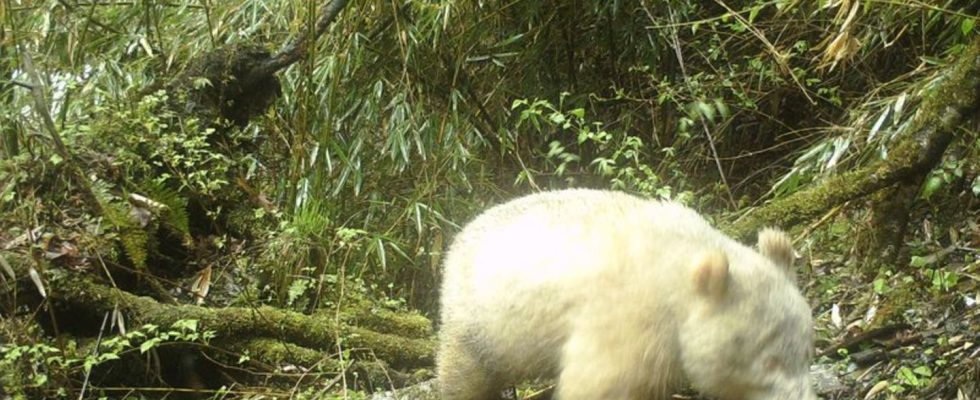Animals
Researchers gather new insights into albino pandas in China
This infrared camera image taken with a photo
© XinHua/dpa
It is a remarkable image from a camera trap in the southwestern Chinese province of Sichuan: an albino panda roams around there – researchers have been observing the animal for years. Why is it completely white?
Chinese researchers have gained new insights into a rare albino panda. A DNA testing has shown that the snow-white giant panda is a male, Chinese state media reported. A team of experts in the Wolong Nature Reserve in southwest China’s Sichuan Province had been examining the bear’s feces and its behavior since May 2019. A camera trap had previously captured a photo of the animal, causing great interest.
The bear doesn’t seem to be an outsider due to its unusual appearance. “The white panda has formed positive relationships with other individuals in the area,” said panda expert Li Sheng from the prestigious Peking University, according to Xinhua news agency.
Research at 2000 to 3200 meters altitude
According to reports, the scientists also spent four years studying the albino panda’s feeding behavior, its possible mating and fighting activities and how it marks its territory. To do their work, the experts had to climb to the animal’s habitat in the mountains at an altitude of 2,000 to 3,200 meters, which sometimes took around ten hours.
Pandas typically have black and white fur. The albino panda could therefore have a metabolic disorder. In animals and people with albinism, the production of the pigment melanin is disturbed. Skin, hair or fur are particularly light because of the genetic defect.
In China, giant pandas are considered the national animals. They are one of the most endangered species in the world. According to UNESCO, the reserves around Wolong are home to around 30 percent of the global panda population. According to the environmental organization WWF, there are just over 1,800 giant pandas living in the wild. The animals are solitary animals and feed mainly on bamboo.

